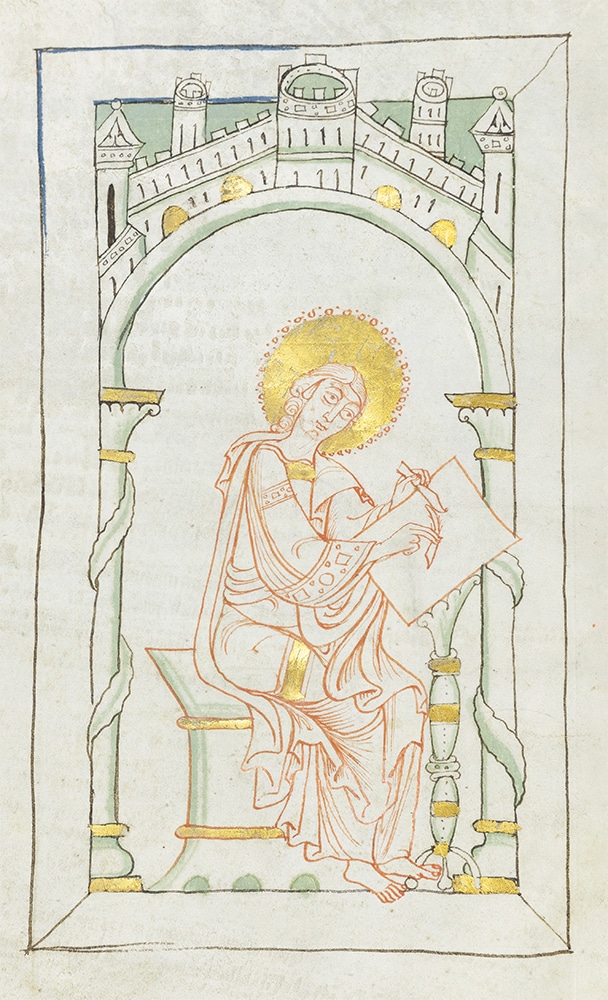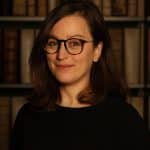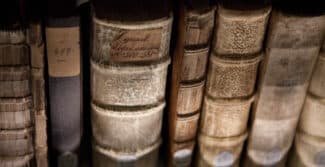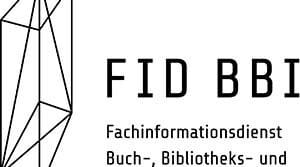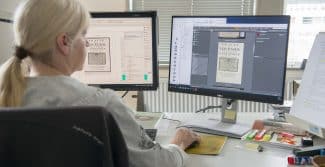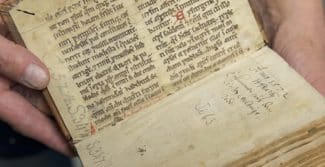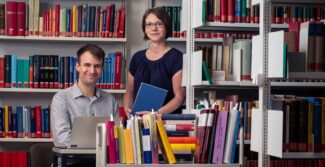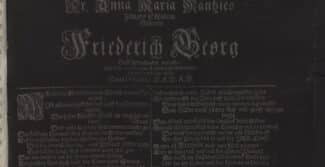6 May 2020
You can find the talk in the ‘Download’ section on the right. In it Christine Jakobi-Mirwald explains how books were made in the early Middle Ages using the example of a multi-volume book from Wissembourg. Since the written format does not allow a dialogue between readers and author, we took the liberty of asking Ms Jakobi-Mirwald eight questions about her field of research.
HAB: In your talk you really breathe life into the monk Adeland and his contemporaries. How does one go about opening up history in such a visual, participatory way?
Christine Jakobi-Mirwald: Quite simply, by reading good historical fiction for young adults. I grew up with the likes of Rosemary Sutcliff and Wiebke von Thadden and I was certainly not the only child who became interested in history – and even went on to study it – prompted by the desire to find out if what they wrote was actually true. For me, maintaining this original curiosity should be a guiding principle of doing research.
HAB: How did you arrive at your field of study?
Christine Jakobi-Mirwald: Through roundabout ways, coincidence and the great good fortune to have met the right people at the right time, who then advised me to make some seemingly counter-intuitive decisions. The only constant in the whole process was not art but language, and above all Middle Latin.
HAB: What is your first step when you start investigating a manuscript you know nothing about?
Christine Jakobi-Mirwald: Looking at as many images as I can, and if possible, a fully digitised manuscript. This is becoming easier with every passing day. In the case of the impeccable in-depth cataloguing of the Wissembourg codices, the entire catalogue entry including classification and literature is prepared in bite-sized chunks and furnished with helpful links, which saves you an enormous amount of time. I make myself acquainted with the text as far as possible using Internet resources and my own reference library, and then I go to the library and look at the original if that is an option. In this case, sadly it was not.
HAB: How did you come across the Wissembourg manuscript?
Christine Jakobi-Mirwald: I’ve still never seen it, unfortunately. I knew about it and found out more when Stefanie Westphal introduced it at a conference in Trier in 2018. Her talk had the wonderfully lively title ‘Ubi sunt imagines’, which I just loved because it was so similar to my own title, ‘Is your picture really necessary?’ This quote brilliantly sums up the reserved attitude of the court scholar Theodulf von Orléans and points out that images were not considered nearly as important as we think today. So it was wonderful to get the Wissembourg holdings – and especially under this title – as an affirmation, as it were.
HAB: Is 14. Weiss. a ‘typical’ Wissembourg manuscript of the early 9th century?
Christine Jakobi-Mirwald: Yes, because it is a good example of the production of its time in terms of the script and other features. It also teaches us a great deal about what went into producing a book containing a lot of text at that time. The book was not necessarily made in the same order it reads, and the different volumes were not illuminated uniformly; in fact, there is often very little consistency to the features at all. The script was important and the ornamentation helped structure the manuscript but it was also a badge of honour for bible and patristic manuscripts.
HAB: Where would the illustrator and scribe of 14. Weiss. have learned their craft? And were they perhaps one and the same person?
Christine Jakobi-Mirwald: The scriptorium had not been up and running long but it had already copied official documents and would have trained up scribes in monasteries. The popular question as to whether scribe and illustrator were indeed one and the same person is impossible to answer with any certainty. Even if the same scribe and illustrator always appear together in a small scriptorium, one can say ‘highly likely’ at best – but there can never be any proof. Not even a seemingly unequivocal note from the scribe or benefactor provides clarity because ‘xy scripsit et pinxit’ can also mean ‘xy commissioned the writing and illustration work’.
HAB: What parchment stitching do you like the most?
Christine Jakobi-Mirwald: Favouritism shouldn’t be encouraged, you know! Recreating the stitching was great fun and it taught me a huge amount. It was possible to recreate some of the stitches simply by studying them carefully and learning things like needle binding from Living History people. But those brightly coloured ‘hemstitches’ in a staggered Breton stitch, I can’t do those. It’s like drawing interlace patterns: it just doesn’t add up. The re-enactment process has certainly taught me one thing: humility.
HAB: If you had been an Adeland devotee, what form of craftsmanship would you most like to have adopted in bookmaking?
Christine Jakobi-Mirwald: Well, first of all, I am very happy that I didn’t live at that time. It was certainly not much fun, especially for women. We shouldn’t forget that we enjoy freedoms today that were unthinkable even for our grandmothers. In the 9th century the only chance a woman had of not being married off as a teenager and being condemned to a life of hard labour and then probably dying while giving birth for the tenth time, was by entering a convent. But you needed a dowry to enter a convent. And if hourly prayers, choir singing and convent work were the best thing that could happen to a woman in those days, I’m happy to be alive today. If I had to live in the Middle Ages, then preferably as a man. Being the elder St Gallen brother, who bossed everyone around, always knew best and just took care of the bookbinding, that sounds alright to me …
